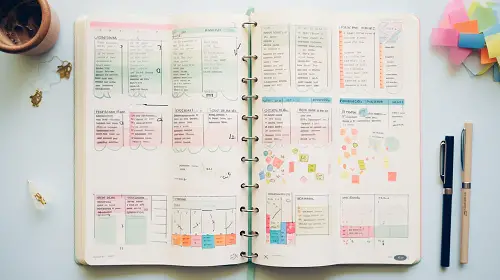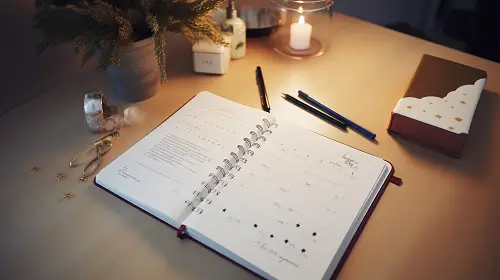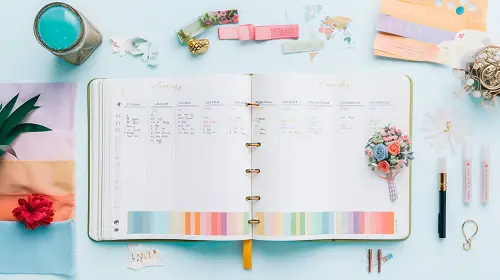In the world of bullet journaling, the possibilities are endless when it comes to creating collections and layouts. These elements are essential for personalizing your bullet journal and making it a powerful tool for organization, creativity, and self-expression. In this comprehensive guide, we will delve into the art of mastering bullet journal collections and layouts, helping you unlock the full potential of your journal.
Understanding Bullet Journal Collections
Collections are specialized pages in your bullet journal dedicated to specific themes, topics, or purposes. They serve as a repository for information, ideas, and trackers that relate to a particular area of your life. Collections allow you to centralize and organize related content, making it easy to reference and update as needed.
Popular Collections to Consider
- Habit Tracker: A habit tracker is a collection that helps you monitor and track your daily habits. It allows you to visually see your progress and identify patterns in your routines, making it easier to form new habits or break old ones.
- Gratitude Log: A gratitude log is a collection where you can write down things you are grateful for each day. It serves as a reminder to appreciate the positive aspects of your life and can contribute to a more positive mindset.
- Reading List: A reading list collection is perfect for book lovers. It allows you to keep track of the books you want to read, books you have already read, and any notes or thoughts you have on each book.
- Bucket List: A bucket list collection is a place to jot down all the experiences and achievements you hope to accomplish in your lifetime. It serves as a reminder of the things that bring you joy and can motivate you to pursue your dreams.
- Finance Tracker: A finance tracker collection helps you keep track of your expenses, budget, and financial goals. It can include monthly budgets, savings goals, and spending logs to help you stay on top of your finances.
- Meal Planning: A meal planning collection allows you to plan your meals in advance, creating weekly or monthly menus. This can help with grocery shopping, meal prep, and maintaining a healthy and balanced diet.
- Travel Itinerary: A travel itinerary collection is perfect for documenting your travel plans, including flights, accommodations, attractions, and other important details. It ensures that you have everything organized and easily accessible when you embark on your adventure.
Tips for Creating Collections
- Indexing: As you create collections, make sure to index them in your bullet journal’s index or table of contents. This will make it easier to locate specific collections in the future.
- Page Numbering: Number the pages of your bullet journal as you go along, including your collections. This will help you keep track of their order and find them quickly.
- Experimentation: Don’t be afraid to experiment with different types of collections. Tailor them to suit your needs, interests, and goals. If a collection doesn’t work for you, don’t hesitate to adapt or remove it.
- Decorative Elements: Add decorative elements to your collections to make them visually appealing. You can incorporate doodles, hand-lettering, stickers, or washi tape to personalize each collection and make them more engaging.
Crafting Beautiful Bullet Journal Layouts
Bullet journal layouts refer to the arrangement and design of your weekly, monthly, and daily spreads. They dictate how you organize your tasks, events, and notes within your journal. Crafting beautiful layouts is not only visually pleasing but also enhances the functionality and usability of your bullet journal.
Key Elements of a Well-Designed Layout
- Headers and Titles: Clearly label each section of your layout with headers and titles. This helps distinguish between different categories and makes it easier to find specific information.
- Grid Structure: Utilize a grid structure to create consistency and order within your layouts. This can be achieved through even spacing, grids, or lines that divide your page into sections.
- Functional Icons: Incorporate functional icons or symbols to represent different types of tasks or events. This allows for quick reference and easy identification of different elements in your layouts.
- Whitespace: Leave whitespace or empty spaces in your layouts to create a clean and uncluttered look. This helps prevent visual overwhelm and allows your content to stand out.
- Color Coding: Implement a color-coding system to visually categorize different types of tasks or events. This can help you easily identify priority items, deadlines, or specific categories within your journal.
Tips for Designing Layouts
- Plan Ahead: Sketch out your layout ideas before adding them to your bullet journal. This allows you to experiment with different arrangements and make any necessary adjustments before finalizing your design.
- Consistent Fonts: Choose a set of fonts that you will use consistently throughout your bullet journal. This includes fonts for headers, subheadings, body text, and any other text elements. By using the same fonts across your layouts, you create a cohesive visual aesthetic that ties everything together.
- Color Scheme: Select a color scheme to use in your layouts. This can be a combination of two to five colors that complement each other. By consistently using this color scheme throughout your bullet journal, you create a sense of harmony and unity.
- Layout Structure: Establish a consistent layout structure for your weekly, monthly, and daily spreads. This includes the placement of headers, sections, and any other recurring elements. By maintaining a consistent layout structure, you make it easier for yourself to navigate and find information within your journal.
- Use of Bullets and Symbols: Utilize bullets and symbols consistently to represent different types of tasks, events, or notes. This helps create a visual hierarchy and makes it easier to scan and understand your journal entries.
- Whitespace and Margins: Leave consistent amounts of whitespace and margins in your layouts. This creates a balanced and visually pleasing composition. It also allows for easy readability and prevents your journal from feeling cluttered.
By incorporating these tips and striving for consistency in your bullet journal layouts, you will create a visually appealing and organized journal that is a pleasure to use.
Frequently Asked Questions (FAQ)
Q1: How often should I update my collections in my bullet journal?
A1: The frequency of updating your collections depends on their nature and your personal preferences. Some collections, like habit trackers or gratitude logs, may require daily updates. Others, such as a bucket list or reading list, may be updated less frequently. It’s important to find a rhythm that works for you and fits your lifestyle.
Q2: Can I add new collections to my bullet journal at any time?
A2: Absolutely! One of the beauties of bullet journaling is its flexibility. You can add new collections to your journal whenever inspiration strikes. Simply designate a new page or spread for the collection, index it, and start filling it with the relevant information. Remember, your bullet journal is a reflection of your unique journey, so feel free to make it your own.
Q3: How can I ensure that my bullet journal layouts are practical and functional?
A3: Practicality and functionality are key considerations when designing your bullet journal layouts. To ensure this, prioritize simplicity and ease of use. Opt for clean and uncluttered designs, with enough space for writing and adding information. Test your layouts by using them for a few weeks and make any necessary adjustments based on your experience and needs.
Q4: Can I use digital tools or apps to create my bullet journal collections and layouts?
A4: Absolutely! While traditional pen and paper bullet journaling is popular, many people also opt for digital tools or apps to create their collections and layouts. Digital tools offer added flexibility, ease of editing, and the ability to sync across devices. Find the method that works best for you, whether it’s a physical journal, a digital app, or a combination of both.
Q5: How can I stay motivated to maintain my bullet journal collections and layouts?
A5: Staying motivated to maintain your bullet journal requires finding joy in the process and celebrating your progress. Set achievable goals, experiment with different artistic techniques, and find inspiration from other bullet journal enthusiasts. Additionally, take breaks when needed and give yourself grace for imperfect pages. Remember, bullet journaling is about self-expression and self-care, so enjoy the journey.
In conclusion, mastering bullet journal collections and layouts involves understanding the purpose and potential of collections, designing aesthetically pleasing layouts, and prioritizing consistency and functionality. By incorporating these principles into your bullet journal, you can create a personalized and effective organizational tool that sparks joy and enhances your productivity. Happy journaling!



